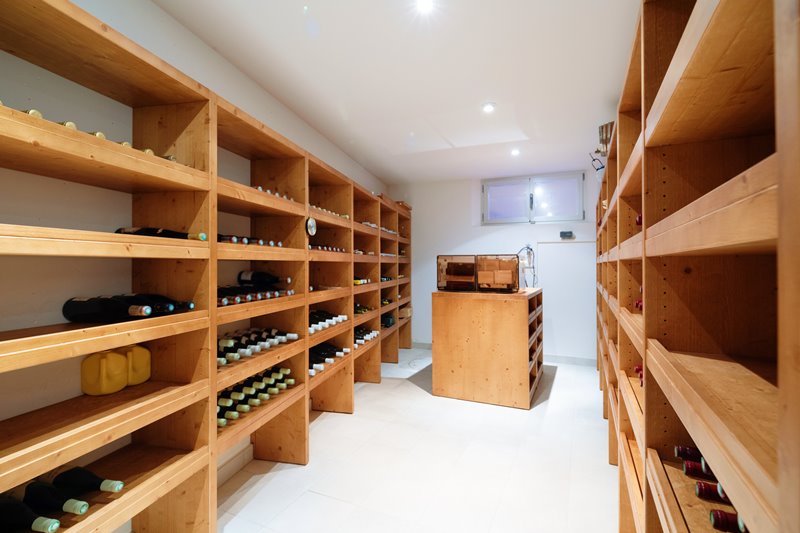The art of wine storage: a comprehensive guide to creating an ideal environment for your collection
Discover the science and craft of wine preservation at home, from historical practices to modern techniques

For centuries, conventional wisdom maintained that wine should be consumed in its youth. This belief stemmed from wine's delicate and ever-changing nature. Without proper care, oxygen can adversely affect wine, turning its alcohol into acetic acid, essentially turning it into vinegar. However, as the ancient Greeks and Egyptians discovered, when stored in well-sealed amphorae or containers, the finest wines not only preserve their character but can also improve with age.
Modern wine preservation
Fast forward to the present, wine preservation has undergone a seismic shift. Different types of wine demand specific maturation and resting periods. For instance, light white wines and rosés are best enjoyed young, while reserva white wines and short-aged reds necessitate a brief resting period to fully develop. Long-aged reds or reservas, on the other hand, require years to reach their peak.
This brings us to the crux of wine preservation: maintaining the wine you purchase in the best possible conditions to ensure it ages gracefully. Modern winemaking techniques have enhanced the stability and preservation capabilities of wine without the addition of external preservatives. This is attributable to the superior purity and control afforded by modern equipment, resulting in a more stabilized and inert wine, less prone to spoilage.
Essential factors for optimal wine storage at home
Despite advancements in wine stabilization, optimal preservation in a home cellar is contingent on several factors:
- Temperature: A constant temperature between 12 and 16°C (53.6 and 60.8°F) is ideal. The temperature should be measured before deciding the location of the wine cellar, taking into account nearby heating pipes and other elements that may need insulation.
- Humidity: High humidity levels, around 70-75%, are preferable. Excessive humidity may lead to mold and rot, affecting labels and corks, while insufficient humidity may dry out the corks.
- Ventilation: While a wine cellar does not require extensive ventilation, it should have access to fresh air. If the cellar is subterranean and sealed, it must have an external ventilation route.
- Lighting: Dim lighting is essential, as light can significantly damage wines. Recent studies suggest that low-intensity LED lights are the most suitable for illuminating wine cellars.
- Vibration: It is crucial to keep wines away from vibrations and noises, as these can be detrimental. Refrain from playing music in the cellar or locating it in a garage.
- Cleanliness: Thoroughly cleaning and disinfecting the wine cellar before installing wines is vital. It must be kept uncluttered and exclusively store wine, devoid of other food items whose smells could permeate the wine. A dirty cellar accelerates wine spoilage through bacterial contamination.
- Position and accessibility of bottles: Bottles should be stored horizontally to keep the liquid in contact with the cork, and they should be spaced apart. Bottles intended for consumption within 12 months can be stored vertically.
- Organization: Maintain an orderly arrangement by categorizing wines. An inventory system, even a simple Excel sheet, can be invaluable for this purpose.

Optimizing storage space
Wine is a cherished commodity for connoisseurs, and its proper preservation is fundamental for retaining its unique flavor and aroma. Selecting an apt location for a wine cellar is paramount, as it dictates whether ideal conditions for wine preservation can be met.
For those fortunate enough to have ample space in a villa or single-family home, the basement is often ideal, provided it doesn't share space with a garage, storage room, pantry, or laundry room. This space should have a northern orientation (or southern in the Southern Hemisphere), be surrounded by thick concrete or stone walls, have a porous floor to absorb moisture, and have adequate ventilation.
Nonetheless, even in a smaller space like an apartment, finding the perfect spot is feasible with effort and dedication. One option is to use an old apartment with solid walls, high ceilings, long corridors, and interior rooms. Alternatively, in a modern apartment, look for a cool, isolated room, or artificially create such conditions.
Modern temperature regulation systems, such as fiberglass, expanded polyurethane sheets, or air conditioners, can provide suitable conditions in any room. If these options are unfeasible, specialized wine cabinets that regulate temperature and humidity are an excellent alternative.
Once the location is chosen, attention should turn to the layout and furniture. The cellar should be simple, with wine racks, a table for wine tasting, and shelves for storing other utensils.
Wine racks, the most critical element of cellar furniture, come in various forms, ranging from basic wooden shelves to prefabricated racks made of iron, plastic, ceramic, or wood.
It is vital to avoid storing wine in the kitchen, as its frequent temperature fluctuations, fumes, smells, and noises create a detrimental environment for wine preservation. The judicious selection of storage space and the proper arrangement of a wine cellar can spell the difference between a wine that merely endures and a wine that flourishes with age. Wine preservation may seem like an art form, and in many respects, it is. However, the flavor and character of a well-preserved wine are well worth the effort.
Founded in 2007, Vinetur® is a registered trademark of VGSC S.L. with a long history in the wine industry.
VGSC, S.L. with VAT number B70255591 is a spanish company legally registered in the Commercial Register of the city of Santiago de Compostela, with registration number: Bulletin 181, Reference 356049 in Volume 13, Page 107, Section 6, Sheet 45028, Entry 2.
Email: [email protected]
Headquarters and offices located in Vilagarcia de Arousa, Spain.